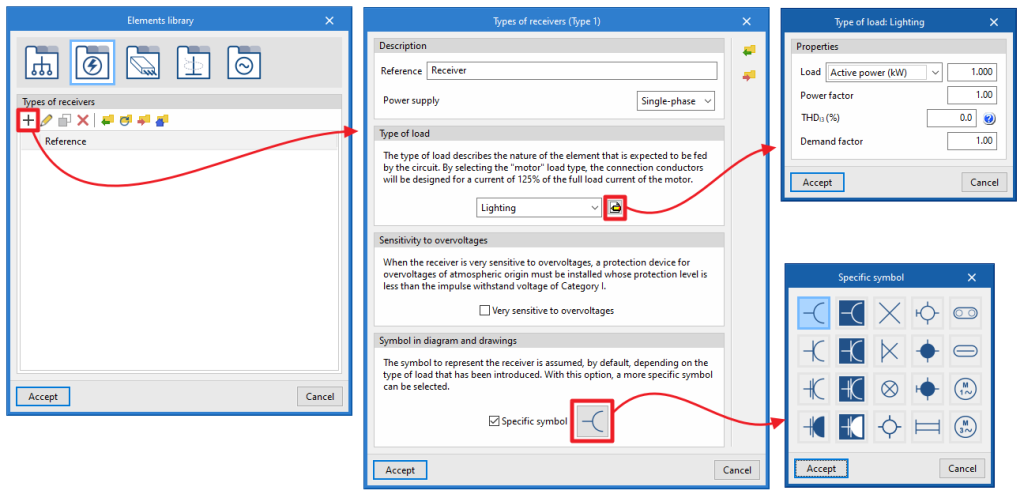Defining the types of receiver
The types of receivers available in each job can be defined via the "Project" section of the general interface toolbar, then selecting the "Element libraries" option.

When an element is added to the table, the "Types of receivers" window opens, in which the following parameters are configured:
- Description
- Reference
- Power supply (Single -phase / Three-phase)
- Type of load
The load type describes the nature of the element that the circuit is intended to supply.- Selecting the type of load
- Lighting
- Emergency
- General use outlet
- Motor
- Electric vehicle charging
- Generic
- Defining the characteristics of the type of load
- Load (Apparent power (kVA) / Active power (kW) / Rated current
- Power factor
- THDI3 (%) (range 3 harmonic distortion index)
Allows users to enter the percentage of the third harmonic distortion present in the load. - Demand factor
- Performance (only in motors)
- Start factor (only in motors)
- NEMA code / Generic
- Starter (optional; only in motors)
- Direct / Variable frequency drive
- Selecting the type of load
- Sensitivity to overvoltages
This is used to indicate that the receiver is very sensitive to overvoltages. In this case, an atmospheric overvoltage protection device with a protection level lower than the Category I impulse withstand voltage must be installed.- Very sensitive to overvoltages (optional)
- Symbol in diagram and drawings
The symbol for representing the receiver is assumed, by default, depending on the type of load entered. The selected symbol will represent the electrical receiver in the single-line diagram of its own power supply circuit.- Specific symbol (optional)
Allows users to select a specific symbol from a small library of symbols integrated in the program.
- Specific symbol (optional)
Note:
The icons on the right-hand side of the panel allow users to import and export the defined receiver data to files on disk.



